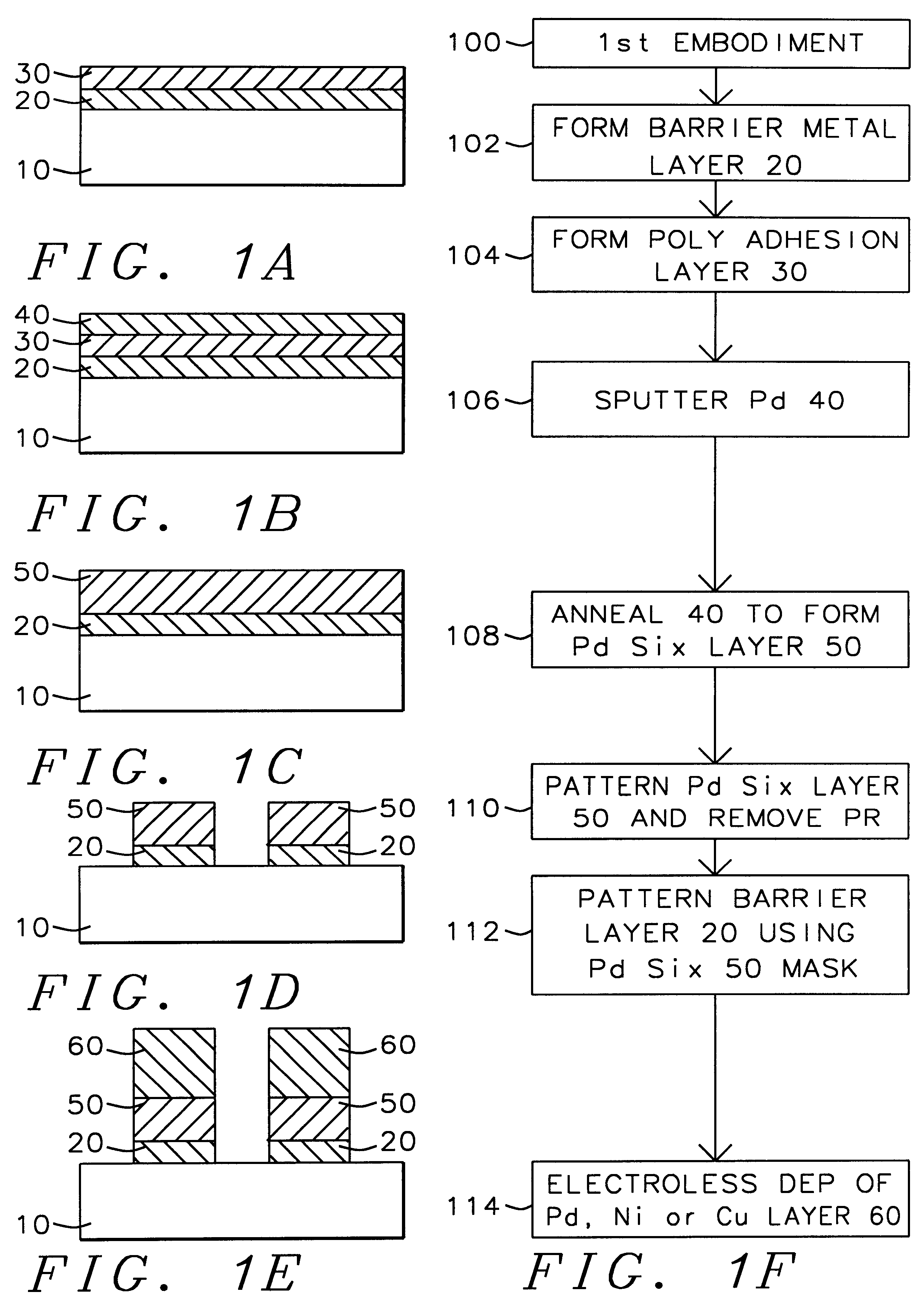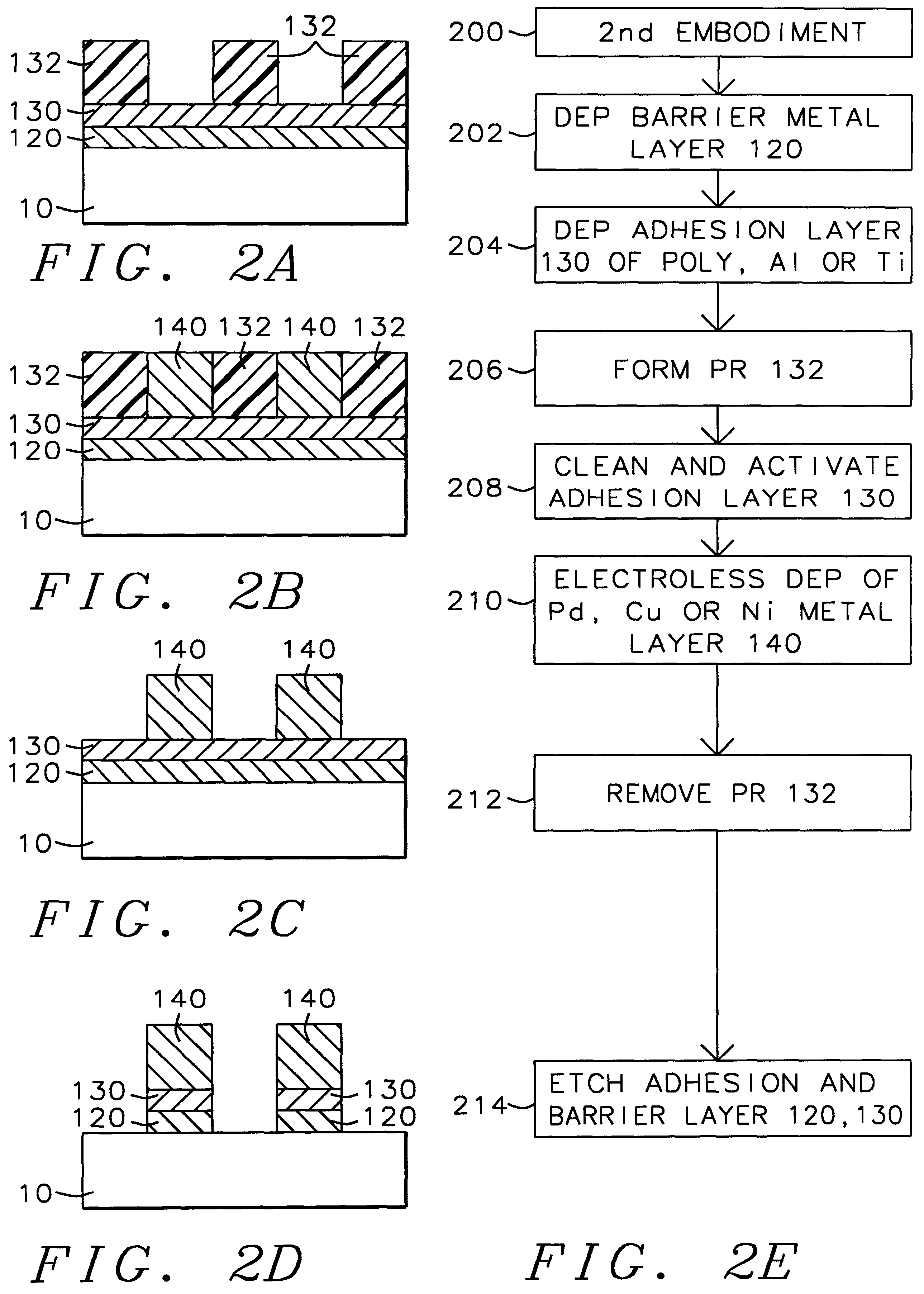Method of electroless plating copper on nitride barrier
a technology of nitride barrier and electroless plating, which is applied in the direction of conductive pattern formation, liquid/solution decomposition chemical coating, and insulating substrate metal adhesion improvement, etc., can solve the problems of controlling the plating process, complex chemical reactions occurring at the plated surface, and limited acceptance of the technology in the ic manufacturing community
- Summary
- Abstract
- Description
- Claims
- Application Information
AI Technical Summary
Problems solved by technology
Method used
Image
Examples
Embodiment Construction
The invention has 3 preferred embodiments. The first embodiment forms metal lines or interconnects. The key features / steps of the first embodiment are: step 108--PdSix layer 50 The table below indicates the key steps and their importance.
The 1st embodiment solves the problems of: forming the silicide layer on the surface of refractory metal or contact hole and then the electroless plating can easily selectively deposited metal on the exposed PdSix region.
The second embodiment forms another metal line. The key features / steps of the second embodiment are:
The second embodiments using Al, Poly or Ti material as a seed material, (Adhesion layer 130). The metal is selectively electroless deposited over the adhesion layer. Also important is the pickeling and activating or zincating process. The 2nd embodiment is very simple and compatible with conventional IC processing.
The third embodiment forms a solder bump. The key features / steps of the third embodiment are: 1 chemical-mechanical polis...
PUM
| Property | Measurement | Unit |
|---|---|---|
| Angle | aaaaa | aaaaa |
| Angle | aaaaa | aaaaa |
| Angle | aaaaa | aaaaa |
Abstract
Description
Claims
Application Information
 Login to View More
Login to View More - R&D
- Intellectual Property
- Life Sciences
- Materials
- Tech Scout
- Unparalleled Data Quality
- Higher Quality Content
- 60% Fewer Hallucinations
Browse by: Latest US Patents, China's latest patents, Technical Efficacy Thesaurus, Application Domain, Technology Topic, Popular Technical Reports.
© 2025 PatSnap. All rights reserved.Legal|Privacy policy|Modern Slavery Act Transparency Statement|Sitemap|About US| Contact US: help@patsnap.com



